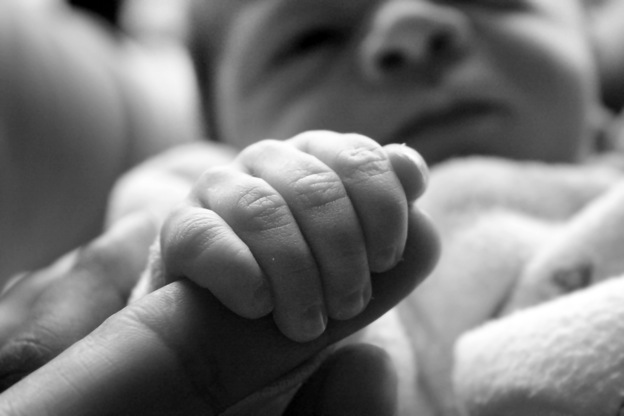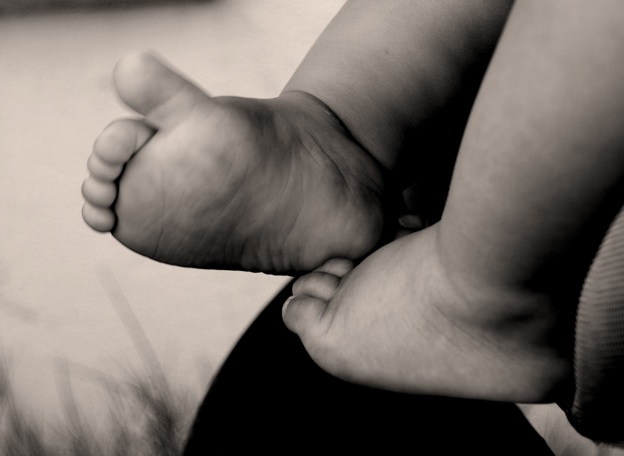SingaporeMotherhood | Baby & Toddler
September 2013
Baby Sleep Secrets: Co-Sleeping

Co-sleeping is a hot-button topic in parenting circles. It saved my sanity, but it’s not for everyone. “I don’t recommend co-sleeping unless you are really sure it is what you want and if you understand that you will have to make a painful transition at some stage,” says Tizzie Hall, the International Baby Whisperer and author of the Save Our Sleep series. “If your baby decides to stay in your bed until he is 16, are you willing to accept that? Of course not, so where do you draw the line?”
Hall does admit though that her views are “somewhat one-sided”. As a baby sleep consultant, she meet with families when they find that their co-sleeping arrangements are not working, or have caused a sleeping accident.
Here in Asia however, many babies and children still sleep in the same bed as their parents. If you do decide to co-sleep with your baby, what is the best way to ensure that everyone gets the best sleep that they can get, peacefully, and most importantly, safely?
Here’s what Tizzie says.
The Pain of Stopping
“Over the years, I have been called in so many times to help parents who have come to the conclusion they can no longer co-sleep for various reasons. They find they need some help in moving the child into their own cot or bed. A lot of parents find that once their baby gets older it is just too hard to all share a bed.
Very often, and in my opinion wrongly, one of the parents has to move into another room so that everyone gets some sleep. Even with one less person in the bed the remaining parent can still find it hard to sleep as their toddler tosses and turns or even tries to sleep on top of them. I have to say I have found helping parents to stop co-sleeping one of the hardest tasks I tackle in my professional life.
I look at these little children and think it is so unfair for them to be suddenly told that co-sleeping does not work and that it is time to move into their own bed. An extreme case that always sticks in my mind was an 11 year-old boy who had pretty much always slept in his parents bed. His parents always held out hope that one day he would move to his own room but at 11, he was still there every night.
When the time came to go away on school camp he was so frightened because he had never spent a night away from his mother. It took several weeks of him working really hard to overcome his fears but in the end, he did. I can’t tell you how good it was to hear that he had a great time at school camp. There were moments when I really didn’t believe he would be going at all.
How to Co-sleep Safely
If you do decide to co-sleep (whether at night or during daytime naps) it is important to follow some basic safety precautions but note, as I said before, I do not recommend the practice at all.
- Never sleep with your baby if you or anyone else in the bed is on medication.
- Never co-sleep with your baby on a night that you or anyone else in the bed have had an alcoholic drink or taken any illicit drugs.
- Always make sure you or anyone else in the bed is aware of the baby‘s presence.
- Never co-sleep in the same bed as your baby if you or anyone else in the bed smokes as this adds to the risk of Sudden Infant Death Syndrome (SIDS).
- Always ensure the bed you chose to co-sleep in is absolutely safe for you and your baby. The bed needs to be large enough to provide ample room for everyone’s movement.
- The safest place for co-sleeping is a large mattress on the floor. Make sure that there are no gaps for your baby to become wedged in. The mattress needs to be firm and smooth.
- Never allow your baby to sleep on a soft surface such as a water bed, pillow top mattress or any other flexible surface as this increases the baby’s risk of suffocation.
- Never let your baby sleep in a bed that is raised off the floor as your baby could roll or accidentally get pushed out (Note: most guardrails are not suitable for babies under two years old).
- Ensure all fitted sheets are secured properly and cannot be pulled loose.
- The safest place for your baby to co-sleep is between the mother and the wall. Fathers, siblings and carers don’t have the same instinctive awareness of a baby’s location as mothers do. Babies can wake their mothers with little movement or noise. If you find you don’t wake easily until your baby is screaming then you should not co-sleep.
- If you are a large person there is additional risk as the mattress may dip under the weight and your baby may roll towards you.
- During the early months, to co-sleep safely you should remove as much bedding as possible (such as duvets, blankets and pillows). Instead, you should dress yourself and your baby in suitable layers of clothing, remembering not to over- or under- heat your baby as this also adds to the SIDS risk.
- Never allow pets in the room where your baby sleeps.
- Ensure you have no long ties or strings hanging off your sleepwear.
- Never leave your baby alone in your bed as it is not as safe as a cot or bassinet.
Opinion is divided on the merits of co-sleeping. Some past studies have shown that it is beneficial to a baby’s health whereas others have linked it to the increased possibility of SIDS.
Co-sleeping does appear to be an increasingly popular parental choice and there are lots of new cots and other sleeping aids on the market to help you co-sleep safely. If you are sure this is how you want to sleep you should check out what is available. A client I visited a few years ago had a cot which was manufactured with just three sides and which could be attached to the bed. This allowed for the baby to be next to his mother but not in the same bed.
The current consensus is that the research neither proves nor disproves a link between co-sleeping and the health of a baby. Therefore, the latest Department of Health advice leans to the side of caution. It recognises that many parents do find it practical to co-sleep with their babies, especially to feed or give comfort but they also recommend that babies should be put back in their own beds to sleep.”
Are you a parent of a child aged 0 to three years? The Nanyang Techological University would like you to be part of its co-sleeping survey. This survey, which is funded by MOE Academic Research Funding, investigates co-sleeping practices in Singapore. Click here to be a part of it!
All content from this article, including images, cannot be reproduced without credits or written permission from SingaporeMotherhood.
Follow us on Facebook, Instagram, and Telegram for the latest article and promotion updates.






